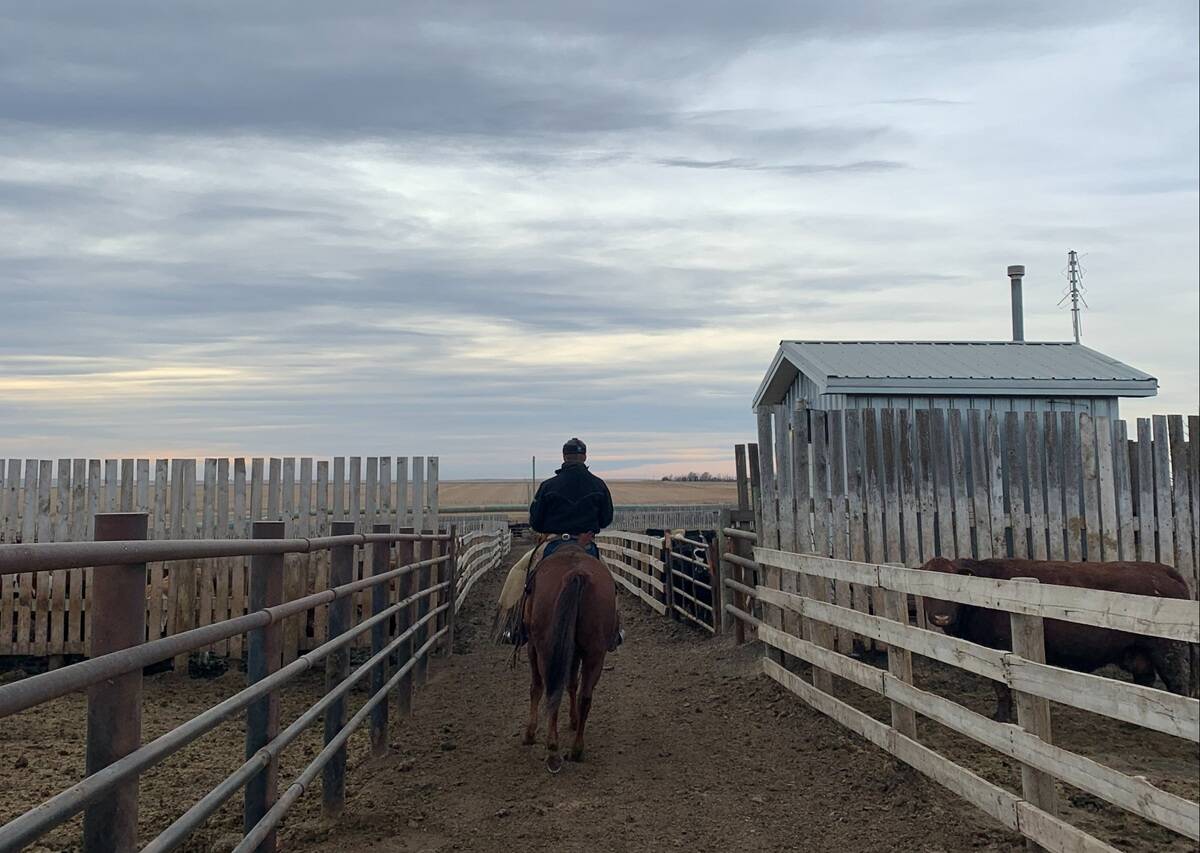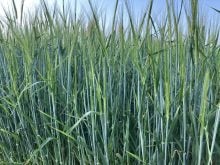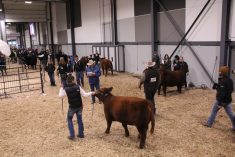Fed cattle
Fed cattle prices have held a steady trading range over the past several weeks. The last full trading week in September saw the Alberta fed steer average $158.01/cwt, which was $24/cwt higher than the same week in 2020. This sideways trading pattern shifted the fed spot basis back to a premium position, $0.45/cwt in mid-September.
Beef demand remains solid both domestically and in the boxed export market. In recent weeks carcass weights have grown larger than a year ago which typically suggests the market is uncurrent; however, that does not seem to be the case. Favourable feeding conditions have contributed to the large average steer carcass weight of 939 lbs. on September 18, which jumped seven lbs. the last week and is 19 lbs. larger than the same week in 2020.
Read Also

Pen riders still better than tech at detecting respiratory disease in feedlot cattle, says researcher
Recent research found that pen riders are better than tech at flagging signs of BRD in feedlot cattle
Fed cattle slaughter is larger with both steers and heifers ahead of a year ago. Fed steer slaughter is 10 per cent larger at 1,283,616 head as of September 18, while heifer kill is 12 per cent above a year ago at 712,901 head. Fed cattle exports including cows are 14 per cent below a year ago with a total of 290,170 head exported as of September 11.
The Alberta and Saskatchewan cattle-on-feed report for September 1 showed a year-over-year increase of 19 per cent, totalling 917,906 head. Feeder cattle sales through August due to drought conditions led to a placement increase of 62 per cent when compared to August 2020. It was also noted that in some cases heifers placed have been rerouted back to feeder pens as opposed to into the herd as breeding stock.
Deb’s outlook for fed cattle: Fed cattle supply is expected to be ample in the near term. Adding to the number of head will be additional pounds of beef production due to large carcass weights. Beef demand is expected to remain strong; however, expect pressure in response to additional availability as larger longer-fed cattle clear the system as we start the fourth quarter. In general, prices will rally towards the end of the year as holiday demand improves and supplies tighten. The technical markets are also indicating a strong start to 2022.
Feeder cattle
Although feed grains in Western Canada are trading at record high levels the feeder market has held steady to stronger over the past month. The yearling market continues to trade near its annual highs. High feed costs and strong first-quarter live cattle futures help keep competition strong for heavier-weight cattle as they come off summer grass. The 850-lb. feeder steer price at the end of September was $195.88/ cwt, which is at par with the end of August and over $2.25/cwt higher than the same week in 2020.
The calf market thus far into the fall run has been surprising as the largest input cost beyond the cost of the feeder is the cost of gain. This year has seen record-high feed grain prices, limited forage available at record prices and very limited straw in many areas, which is also trading higher than seen historically. However, optimism around beef demand, economic recovery and calf supply is reflected in the live cattle futures market for 2022, which has led to calf prices holding steady so far through the fall run. Lightweight calves are trading ahead of last year, with 550-lb. steers averaging $225.11/cwt at the end of September. That is almost $12/cwt higher than the same week in 2020.
Deb’s outlook for feeder cattle: Smaller North American calf supplies coupled with enthusiasm around economic recovery both domestically and globally have buyers eagerly watching the fall market. Although local feed grain costs are high, imported corn has reduced cost of gain and overall inputs for some feedlots, which in turn has supported the feeder market. In the near term, the volume increase in the fall run will pressure some classes of calves lower. Heavier feeder classes will see the least price pressure as class spreads tend to flatten when cost of gain is high. Yearling prices coming off grass will remain strong as the last groups head to town. Overall price pressure is expected as volumes increase; however, downside will be limited as industry optimism seems strong.
Non-fed cattle
Cull cattle volumes remained manageable through September and while prices started to decline seasonally at the start of the month, recent weeks noted strength in the cow market. Export demand for non- fed beef remains strong. At the same time, Canadian cow prices at the export floor have encouraged more cull cows heading south of the border for slaughter, which has increased buyers in the local market.
Nearing the end of September, D1,2 cows averaged $80.17/cwt, which was up nearly $3.75/cwt from the start of September. But when compared to a year ago, in Western Canada, that September average is more than $4/cwt lower. Overall cow slaughter domestically is already outpacing year-ago data, up 11 per cent from the same time in 2020 to total 314,434 head.
Butcher bull prices rallied mid-month as well but dropped slightly to settle at an average of $103.30/cwt nearing the end of September. The total domestic slaughter for bulls to date is 12,861 head which is up 60 per cent from a year ago. Exports of bulls for slaughter are 11 per cent behind the pace of last year at just 26,260 head to date.
Deb’s outlook for non-fed cattle: Late-season rains and some post-harvest grazing have led to cows being out on pasture a little longer than was anticipated in some drought-stricken areas. However, large numbers of cull cows are still expected to come to town in the fourth quarter. Prices on cull cattle are expected to come under some pressure as volumes build in the coming month.















